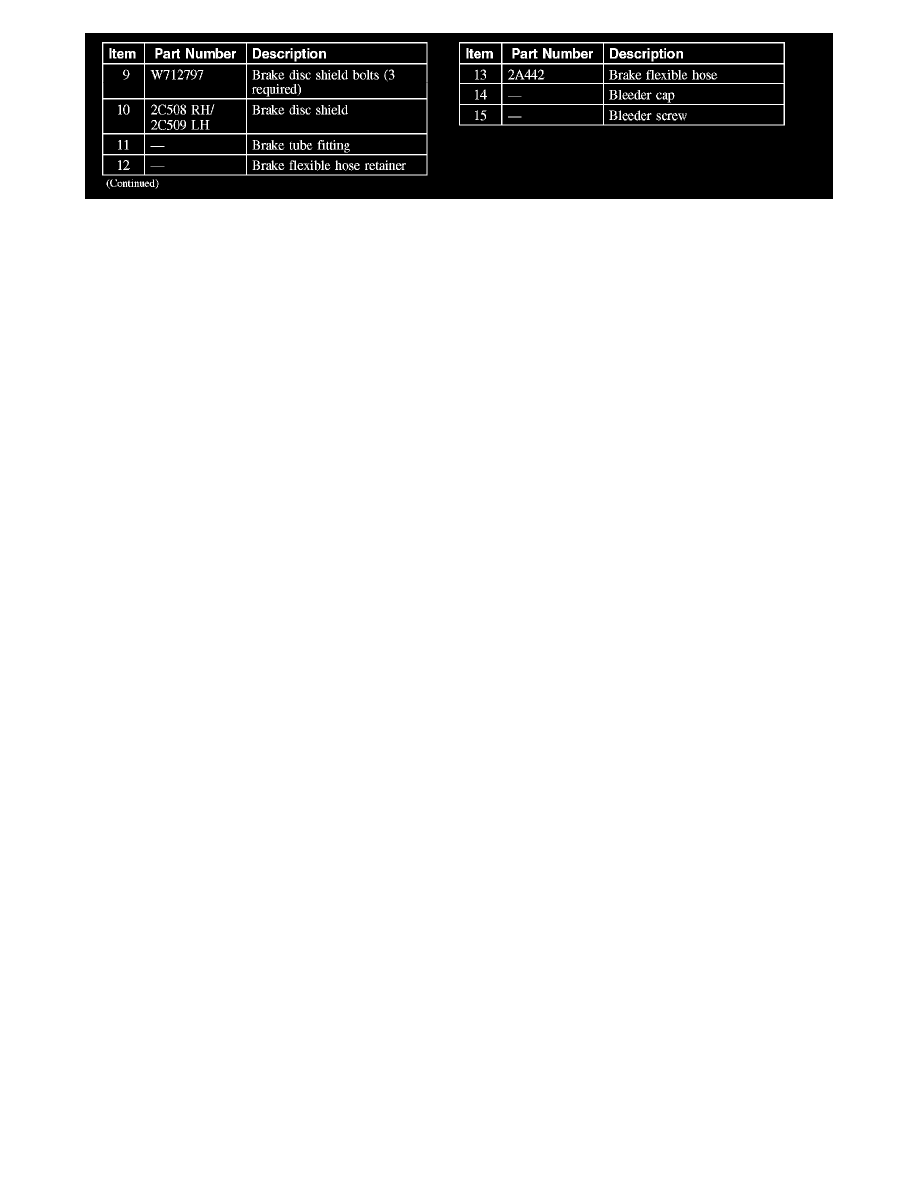Sable AWD V6-3.5L (2008)

Disc Brake System - Exploded View (Part 2)
WARNING: Do not use any fluid other than clean brake fluid meeting manufacturer's specification. Additionally, do not use brake fluid that
has been previously drained. Following these instructions will help prevent system contamination, brake component damage and the risk of
serious personal injury.
WARNING: Carefully read cautionary information on product label. For EMERGENCY MEDICAL INFORMATION seek medical advice.
In the USA or Canada on Ford/Motorcraft products call: 1-800-959-3673. For additional information, consult the product Material Safety
Data Sheet (MSDS) if available. Failure to follow these instructions may result in serious personal injury.
CAUTION: Brake fluid is harmful to painted and plastic surfaces. If brake fluid is spilled onto a painted or plastic surface, immediately wash
it with water.
CAUTION: Do not allow the brake fluid to come in contact with the adhesive backing on the brake pads. If brake fluid is spilled onto the
brake pads, new pads must be installed.
CAUTION: Use only specified brake parts cleaner. Use of other cleaners may leave a residue on the brake caliper preventing the brake pads
adhesive surface from bonding with the brake caliper.
1. Remove the wheel and tire.
2. Check the brake fluid level in the brake fluid reservoir.
^
If required, remove fluid until the brake master cylinder reservoir is half full.
3. Remove the brake caliper bolts.
4. CAUTION: Do not use the brake caliper sight hole to retract the pistons as this may damage the pistons and boots.
CAUTION: Do not allow the caliper to hang from the brake hose or damage to the hose may occur.
CAUTION: Care must be taken when servicing rear brake components without disconnecting the parking brake cable from the brake
caliper lever. Carefully position the caliper aside using a suitable support or damage to the parking brake cable end fittings may occur.
Using hand force and a rocking motion, separate the brake caliper from the anchor plate. Position the brake caliper aside.
^
Support the caliper with mechanic's wire.
5. CAUTION: When the brake pads are separated from the brake caliper, new brake pads must be installed to prevent brake noise. The
brake pads are one-time use only.
Remove and discard the brake pads and spring clips from the brake caliper anchor plate.
6. NOTE: Do not remove the anchor plate guide pins. The guide pins are press fit to the brake caliper anchor plate. If the guide pins are damaged a
new anchor plate must be installed.
Inspect the brake caliper anchor plate assembly.
^
Check the guide pins and boots for binding or damage.
^
Install a new brake caliper anchor plate if it is worn or damaged.
Installation
1. NOTE: To move the piston back into the caliper, the LH piston is turned clockwise and the RH piston is turned counterclockwise.
NOTE: A moderate to heavy force toward the caliper piston must be applied. If sufficient force is not applied, the internal park brake mechanism
clutch cone will not engage and the piston will not compress.
Using the special tool (or equivalent such as OTC tool 7317A), compress the brake caliper piston into its cylinder.
